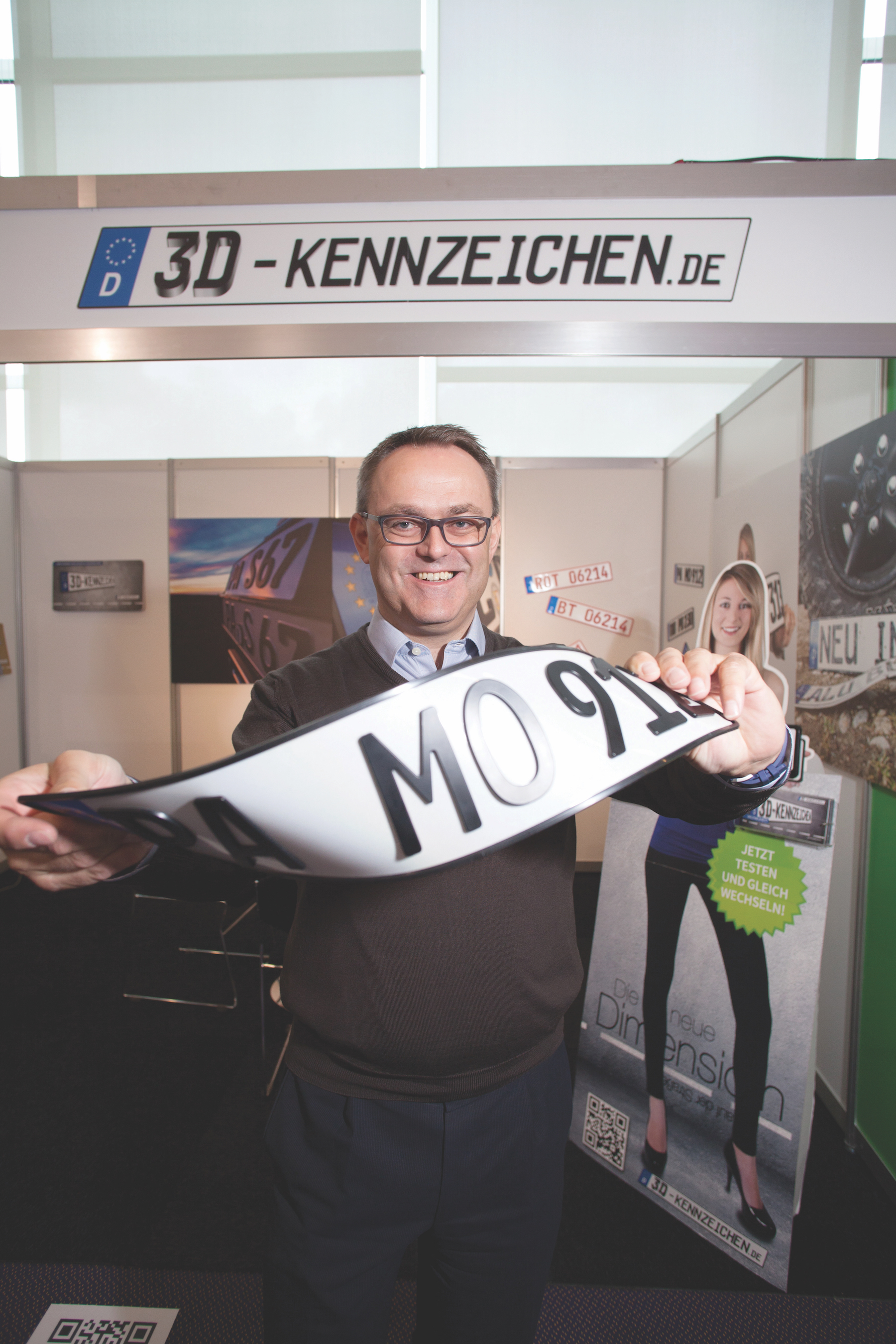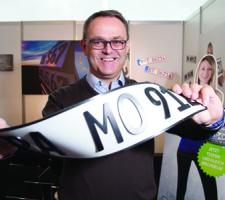
Dr Michael Bauer shows the qualities of the new plastic plate.
Small German company 7626 3D-Kennzeichen is seeking to replace traditional numberplates with its new, polypropylene version, which the company says has several advantages over the existing aluminium type.
Company owner Dr Michael Baueionr comes at the sector from an unusual direction. A label industry specialist, he is also a polymer chemist with a longstanding interest in polypropylene and its qualities.
The plastic version has 3D letters and is less prone to bleaching and scratching, he said.
It uses ‘in-mould’ technology, which allows protective coatings to be integrated into the numberplate during the moulding process rather than applied as a film to a metal plate. Using plastic also cuts the amount of CO₂ generated in its manufacture by 85% compared with aluminium.
<%$Linker:2 Asset <?xml version="1.0" encoding="utf-16"?><dictionary /> 4 93328 0 oLinkExternal www.3D-Kennzeichen.de 3D-Kennzeichen web false /EasySiteWeb/GatewayLink.aspx?alId=93328 false false %>
Company owner Dr Michael Baueionr comes at the sector from an unusual direction. A label industry specialist, he is also a polymer chemist with a longstanding interest in polypropylene and its qualities.
The plastic version has 3D letters and is less prone to bleaching and scratching, he said.
It uses ‘in-mould’ technology, which allows protective coatings to be integrated into the numberplate during the moulding process rather than applied as a film to a metal plate. Using plastic also cuts the amount of CO₂ generated in its manufacture by 85% compared with aluminium.
<%$Linker:






